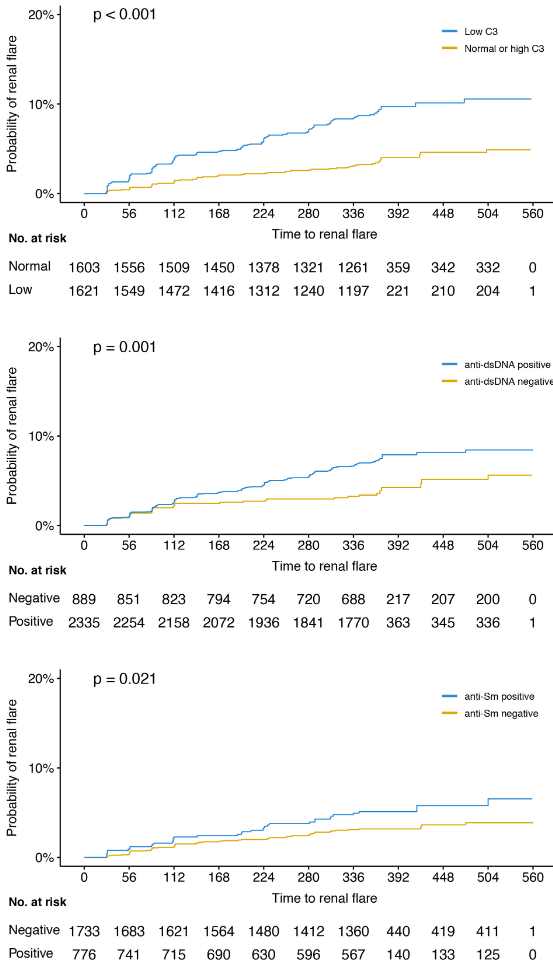ASAS-EULAR recommendations for the management of axial spondyloarthritis: 2022 update
Ramiro S, et al.
ASAS-EULAR recommendations for the management of axial spondyloarthritis: 2022 update
Overarching principles
LoA (0–10) Mean (SD) % with score ≥8
A axSpA is a potentially severe disease with diverse manifestations, usually requiring multidisciplinary management coordinated by the rheumatologist. axSpAは、多様な症状を呈する重篤な疾患であり、通常、リウマチ専門医による集学的治療が必要とされる。
LoA 9.8 (0.4) (% with score ≥8, 100%)
B The primary goal of treating the patient with axSpA is to maximise health-related quality of life through control of symptoms and inflammation, prevention of progressive structural damage, and preservation/normalisation of function and social participation. axSpAの治療の第一の目標は、症状や炎症のコントロールを通じて、健康関連のQOLを最大化すること、構造的損傷の進行防止、機能および社会参加の維持・正常化である。
LoA 9.8 (0.5) (% with score ≥8, 100%
C The optimal management of patients with axSpA requires a combination of non-pharmacological and pharmacological treatment modalities. axSp患者の最適な管理には、非薬物療法と薬物療法を組み合わせることが必要。
LoA 9.8 (0.5) (% with score ≥8, 100
D Treatment of axSpA should aim at the best care and must be based on a shared decision between the patient and the rheumatologist. axSpAの治療は最善の治療を目指すべきであり、患者さんとリウマチ専門医の共同決定に基づくべき。
LoA 9.5 (1.8) (% with score ≥8, 97%
E axSpA incurs high individual, medical and societal costs, all of which should be considered in its management by the treating rheumatologist. axSpAは、個人的、医療的、社会的に高いコストがかかるため、治療するリウマチ専門医はそのすべてを考慮に入れて管理すべき。
LoA 9.5 (0.9) (% with score ≥8, 94%
Recommendations Level of evidence/grade of recommendation*
1 The treatment of patients with axSpA should be individualised according to the current signs and symptoms of the disease (axial, peripheral, extramusculoskeletal manifestations) and the patient characteristics including comorbidities and psychosocial factors. axSpA患者の治療は、現在の疾患の徴候や症状(体軸、末梢、筋骨格系外症状)、併存疾患や心理社会的要因などの患者特性に従って個別に行う必要がある。
LoE 5/D LoA 9.6 (0.8) (% with score ≥8, 97%
2 Disease monitoring of patients with axSpA should include patient-reported outcomes, clinical findings, laboratory tests and imaging, all with the appropriate instruments and relevant to the clinical presentation. The frequency of monitoring should be decided on an individual basis depending on symptoms, severity and treatment. axSpA患者の疾患モニタリングは、患者報告によるアウトカム、臨床所見、臨床検査、画像診断など、すべて適切な道具を用い、臨床症状との関連性を確認する必要がある。モニタリングの頻度は、症状、重症度、治療内容に応じて、個別に決定されるべき。
LoE 5/D LoE 9.5 (1.1) (% with score ≥8, 97%
3 Treatment should be guided according to a predefined treatment target. 治療は、あらかじめ設定された治療目標にしたがって行われるべき。
LoE 5/D LoA9.0 (1.2) (% with score ≥8, 85
4 Patients should be educated about axSpA and encouraged to exercise on a regular basis and stop smoking; physiotherapy should be considered. 患者はaxSpAに関する教育を受け、定期的な運動と禁煙を奨励し、理学療法を検討すべき。
LoE 2b /B (education, exercise) 5/D (stop smoking) 1a /A (physiotherapy) LoA 9.8 (0.5) (% with score ≥8, 100%
5 Patients suffering from pain and stiffness should use an NSAID as first-line drug treatment up to the maximum dose, taking risks and benefits into account. For patients who respond well to NSAIDs, continuous use is preferred if needed to control symptoms. 痛みやこわばりに悩む患者は、リスクとベネフィットを考慮した上で、第一選択薬としてNSAIDを最大量まで使用する必要がある。NSAIDsによく反応する患者については、症状をコントロールするために必要であれば、継続的に使用することが望ましい。
LoE 1a/A LoA 9.5 (0.8) (% with score ≥8, 97%
6 Analgesics, such as paracetamol and opioid-(like) drugs, might be considered for residual pain after previously recommended treatments have failed, are contraindicated, and/or poorly tolerated. パラセタモールやオピオイド系薬剤などの鎮痛剤は、以前に推奨された治療が失敗したり、禁忌であったり、忍容性が低い場合に、残存する痛みに対して検討されることがある。
LoE 5/D LoA 8.9 (1.4) (% with score ≥8, 79%
7 Glucocorticoid injections directed to the local site of musculoskeletal inflammation may be considered. Patients with axial disease should not receive long-term treatment with systemic glucocorticoids. 筋骨格系炎症の局所部位に向けたグルココルチコイド注射が考慮される場合がある。体軸型の患者は、全身性グルココルチコイドによる長期治療を受けてはならない。
LoE 2/B (injections) 5/D (long-term systemic GCs) LoA 9.6 (0.8) (% with score ≥8, 100%
8 Patients with purely axial disease should normally not be treated with csDMARDs; sulfasalazine may be considered in patients with peripheral arthritis. 体軸型のみの患者は、通常、csDMARDsによる治療を受けるべきではない。末梢性関節炎の患者には、スルファサラジンを考慮することができる。
LoE 1a/A (sulfasalazine, methotrexate) 1b/A (leflunomide) 4/A (other csDMARDs) 1a/A (sulfasalazine peripheral disease) LoA 9.6 (0.9) (% with score ≥8, 94%
9 TNFi, IL-17i† or JAKi‡ should be considered in patients with persistently high disease activity despite conventional treatments (figure 1); current practice is to start a TNFi or IL-17i†. 従来の治療にもかかわらず高い疾患活動性が持続する患者には、TNFi、IL-17i†またはJAKi‡を検討すべき(図1);現在のプラクティスでは、TNFiまたはIL-17i†を開始することになっている。
LoE 1a/A LoA 9.2 (1.2) (% with score ≥8, 94%
10 If there is a history of recurrent uveitis or active IBD§, preference should be given to a monoclonal antibody against TNF¶ In patients with significant psoriasis, an IL-17i† may be preferred. 10 再発性ぶどう膜炎や活動性IBD§の既往がある場合は、TNFに対するモノクローナル抗体を優先すべき。有意な乾癬がある患者ではIL17阻害が好まれるかもしれない。
LoE 2b/B (uveitis, IBD) 1a/B (psoriasis) LoA 9.1 (1.8) (% with score ≥8, 97%
11 Absence of response to treatment should prompt re-evaluation of the diagnosis and consideration of the presence of comorbidities. 治療に反応しない場合は、診断の再評価と併存疾患の有無を検討する必要がある。
LoE 5/D LoA 9.5 (0.8) (% with score ≥8, 97%
12 Following a first b/tsDMARD failure, switching to another bDMARD (TNFi or IL-17i†)
or a JAKi‡ should be considered. 初回のb/tsDMARDの失敗後は、他のbDMARD(TNFiまたはIL-17i†)またはJAKi‡への切り替えを考慮すべき。
LoE 2b/B (TNFi after TNFi failure) 1b/A (IL-17i after TNFi failure) 5/D (all other switches) LoA 9.3 (1.1) (% with score ≥8, 88%
13 If a patient is in sustained remission, tapering of a bDMARD can be considered. 寛解が持続している場合は、bDMARD の漸減を検討することができる。
LoE 1a/B (TNFi), 5/D (IL-17i) LoA 9.1 (1.2) (% with score ≥8, 82%
14 Total hip arthroplasty should be considered in patients with refractory pain or disability and radiographic evidence of structural damage, independent of age; spinal corrective osteotomy in specialised centres may be considered in patients with severe disabling deformity. 難治性の疼痛や障害を有し、X線写真で構造的損傷が確認された患者には、年齢に関係なく、人工股関節全置換術を検討すべき。重度の障害性変形を有する患者には、専門施設での脊椎矯正骨切りを検討することができる。
LoE 4/C LoA 9.5 (0.8) (% with score ≥8, 97%
15 If a significant change in the course of the disease occurs, causes other than inflammation, such as a spinal fracture, should be considered and appropriate evaluation, including imaging, should be performed. 経過が著しく変化した場合は、脊椎骨折など炎症以外の原因を考え、画像診断を含めた適切な評価を行う必要がある。
LoE 5/D LoA 9.6 (0.9) (% with score ≥8, 97%








